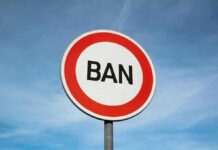
Fed’s latest rate cut decision could reignite inflation, causing concern among conservatives wary of fiscal mismanagement.
Story Highlights
- The Federal Reserve cut interest rates by 25 basis points in September 2025.
- This marks a shift from focusing on inflation control to supporting employment.
- Concerns arise over potential inflation resurgence due to aggressive rate cuts.
- Internal dissent within the Fed reflects debate over policy direction.
Fed’s Policy Shift: Employment Over Inflation
The Federal Reserve recently cut its target interest rate by 25 basis points to a range of 4.00%–4.25%, in a move aimed at supporting a slowing labor market. This marks a significant shift from the Fed’s previous focus on controlling inflation, which remains above the desired 2% target. The decision underscores the central bank’s new priority: stabilizing employment amid signs of economic slowing. However, this shift raises questions about the risk of reigniting inflation, a concern that resonates with many who prioritize fiscal responsibility.
The implications of this policy change are complex. With financial markets already pricing in further rate cuts by the end of 2025 and into 2026, the Federal Reserve finds itself walking a tightrope. Any aggressive easing could undermine recent progress in controlling inflation, which remains a core concern for those who value stable prices and economic predictability. The Fed’s balancing act is made more complicated by conflicting economic signals, such as low unemployment juxtaposed with slowing job gains.
Internal Dissent Reflects Policy Debate
Internal dissent within the Federal Reserve highlights the ongoing debate over the appropriate policy response. Newly appointed Governor Stephen Miran voted for a more substantial rate cut, reflecting a faction within the Fed advocating for aggressive measures to preempt economic downturns. This division within the Fed signals the complexity of the current economic landscape and the challenges in crafting a policy that addresses both employment and inflation concerns. For conservatives, this dissent underscores the importance of maintaining economic stability without undermining long-term fiscal health.
The Federal Reserve’s decisions are closely watched by financial markets, investors, and policymakers alike. With the next Federal Open Market Committee meeting scheduled for late October 2025, expectations are high for another rate cut. This anticipation is driven by concerns over economic growth and the need to support job creation, but it also raises questions about the Fed’s ability to manage its dual mandate effectively.
Potential Risks and Implications
The risks associated with the Federal Reserve’s current policy direction are significant. While lower interest rates can stimulate borrowing and investment, they also carry the risk of reigniting inflationary pressures. Such an outcome could erode purchasing power and destabilize the economic gains achieved in recent years. The Fed’s cautious approach must carefully weigh these risks to avoid compromising its credibility and the broader economic recovery.
As the Fed navigates these challenges, the broader economic and political implications are profound. Decisions made in these critical meetings will shape the economic landscape in the coming years, influencing everything from consumer confidence to election-year politics. For conservatives, the focus remains on ensuring that policies do not compromise economic freedom or burden future generations with unsustainable debt levels.
Sources:
Federal Reserve Cuts Rates to Boost Jobs and Prevent Recession
Federal Reserve Press Release, September 17, 2025
Will Mortgage Interest Rates Drop? October 29, 2025 Fed Meeting

































